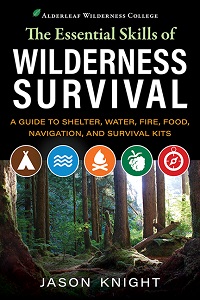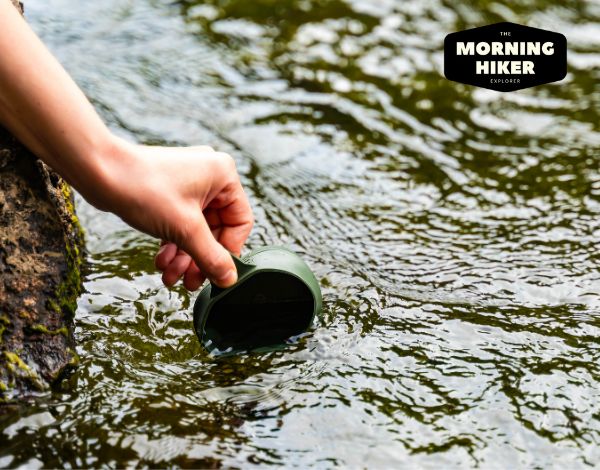Learn the best way to purify water in the wild and turn murky water into crystal-clear hydration with these essential purification techniques.
When you’re out in the wild, the last thing you want to worry about is the safety of the water you’re drinking. That’s why it’s essential to know the best methods for purifying water.
From boiling to filtration, there are several options available to ensure that your water is safe to drink.
Each method has its advantages and disadvantages, and it’s important to understand which one is best suited for your needs. Whether you’re camping, hiking, or just exploring the great outdoors, having access to clean water is crucial for your health and well-being.
In this article, we’ll explore the different methods for purifying water in the wild and help you choose the best one for your next adventure.
In This Article
Why purifying water is important
Water is essential to life, but when it comes to drinking water from outdoor sources, it’s important to purify it. Without proper purification, the water can be contaminated with harmful substances that can cause serious health problems.
Contaminants such as bacteria, viruses, and chemicals can be found in natural water sources. These contaminants can cause illnesses such as diarrhea, vomiting, and even death. It’s crucial to remove these harmful substances before consuming the water.
Water purification is the process of removing contaminants from water to make it safe for consumption. There are various methods of water purification, including filtration, boiling, and chemical treatment. Each method has its advantages and disadvantages, but the goal is always the same – to make the water safe to drink.
When it comes to drinking water from outdoor sources, it’s better to be safe than sorry. Don’t take any chances with your health. Purify your water before consuming it. It’s a small step that can make a big difference in your overall well-being.
Filtering Water vs. Purifying Water: How Are They Different?
When it comes to surviving in the wild, having access to clean water is vital. But how do you make sure the water you find is safe to drink? There are two methods: filtering and purifying.
Filtering is the process of removing larger impurities from the water, such as dirt and debris. It’s a good first step, but it’s not enough to protect against waterborne pathogens like bacteria and viruses.
Purifying, on the other hand, goes a step further. It not only removes larger impurities but also eliminates harmful contaminants like bacteria and viruses. This method is more effective against waterborne pathogens and ensures that the water you drink is safe.
It’s important to note that not all contaminants are created equal. While filtering may be sufficient for removing larger impurities, it’s not enough to protect against harmful bacteria and viruses.
Purifying is the only way to ensure that you’re drinking clean, safe water.
When it comes to survival in the wild, you need to be sure that the water you drink is safe. Don’t take any chances with your health. Purify your water and stay healthy and hydrated.
3 Factors to Consider When Purifying Water in the Wild
When venturing into the wild, water purification is essential. There are three critical factors to consider:
- Wildlife
- Water color
- Water sources
These elements can have a significant impact on the purification process, affecting the quality of the water and the effectiveness of the purification methods.
Animals are one of the most significant factors to consider when purifying water in the wild. They can contaminate water sources with bacteria and other harmful microorganisms, making it unsafe to drink. It’s crucial to choose a purification method that can eliminate these contaminants effectively.
Water color can also indicate the presence of harmful substances in the water. Brown or murky water may contain dirt or other debris that can clog filters and reduce their effectiveness. It’s essential to choose a purification method that can handle different water colors and types.
Water sources can vary greatly in the wild, from rivers and streams to lakes and ponds. Each source has its unique characteristics that can impact the purification process. It’s crucial to choose a purification method that can adapt to different water sources and effectively remove contaminants.
When purifying water in the wild, it’s essential to consider wildlife, water color, and water sources. These factors can impact the purification process and affect the quality of the water.
By choosing a reliable purification method that can handle different conditions, you can ensure safe and clean drinking water in any situation.
Various Ways To Purify Water
There are several methods to purify water in the wild, including boiling, using water filters or purification tablets, using UV light, and distillation. Each method has its own advantages and disadvantages, and it is important to understand which method is best suited for the specific situation and environment.
Boiling Water
This method is pretty self explanitory. It requires a source for water, fire (heat), and something to contain the water while boiling it.
This method involves heating water to a high temperature to kill harmful microorganisms. Boiling is one of the most effective methods of water purification and can be used in emergencies or when other methods are not available.
Water should come to a boil for x mintues, then let sit until it cools down.
This is perhaps the simplist way to purify water for drinking, but it does require these items and time to boil.
Water Filters
Water filters work by removing impurities and contaminants from water through a process called filtration. In the wild, water filters can be used to purify water from rivers, lakes, and other natural sources.
The water filter consists of several layers of filtration media. The first layer is usually a pre-filter that removes larger particles such as leaves, twigs, and debris. The second layer is a carbon filter that removes chemicals, pesticides, and other contaminants that affect the taste and smell of water.
The third layer is a fine mesh filter that removes smaller particles such as sediment, sand, and rust. Finally, an ultrafiltration membrane removes bacteria, viruses, and other microorganisms from the water.
When water is poured into the filter, it passes through each layer of filtration media. As it does so, the impurities and contaminants are trapped by the filter media, leaving clean and purified water that is safe to drink.
Our A List Of Recommended Water Filters For Hiking
- Removes Bacteria & Parasites: The Microfiltration Membrane Removes 99.999999% Of Waterborne Bacteria (Including E. Coli And Salmonella), And 99.999% Of Waterborne Parasites (Including Giardia And Cryptosporidium)
- Removes Microplastics: Removes The Smallest Microplastics Found In The Environment (Down To 1 Micron), And Reduces Turbidity Down To 0.2 Microns
- Lightweight, Easy To Use Portable Water Filter Removes Harmful Bacteria, Protozoa, Cysts, Sediment, And 100% Of Microplastics; Perfect For Outdoor Adventures, Travel, Or Emergency Preparedness
- High-Performance 0.1 Micron Absolute Inline Filter Fits In The Palm Of Your Hand And Weighs Just 2 Ounces; 100% Of Squeeze Units Individually Tested Three Times To Performance Standards By Sawyer
- HIGH-PERFORMANCE FILTER: The BeFree’s 0.1 micron hollow fiber microfilter is tested to protect against harmful organisms, removing bacteria (99.9999% Klebsiella terrigena) and protozoan cysts (99.9% Giardia and Cryptosporidium) to EPA standards.
- ULTRALIGHT & COMPACT: Ultralight at just 2.3 oz. (63 grams) The collapsible Hydrapak Soft-Flask allows for portability in tight spaces like running short, cycling jersey, and vest pockets. Perfect for ultralight hikers, trail runners, and backpackers.
- Protects against 99.999999% of bacteria (including E.coli, Salmonella), 99.999% of parasites (including Giardia and Cryptosporidium), 99.999% of microplastics, silt, sand, and cloudiness
- Enhanced microfilter performance helps to reduce clogging from sand and silt for better flow rate
- 5-Stage Efficient Filtration: With adoption of premium-quality coconut shell activated carbon, 0.1 um ultrafiltration membrane and other raw materials, the Water Filter Straw can effectively reduce harmful substances like chlorine, particulates, sediment, stones, sand, dirt, bad taste &odor in water to ensure the water safety and deliver better drinking experience.
- Professional Combination: Waterdrop Gravity Water Filter Straw with 1.5 gal Gravity-Fed Water Bag is an exclusive water purification combination created for outdoor activities and first aid survival. The large-capacity water bag can hold up to 1.5 Gallons of water at a time, which is about 11 bottles of 500 ml bottled purified water, and can meet the all-day demand for outdoor water drinking.
Water filters are an effective way to purify water in the wild, as they can remove a wide range of contaminants and provide clean and safe drinking water.
Filtration is often used in combination with other purification methods to achieve optimal results.
Click here for a full list of filtration tools
Purification Tablets
Water purification tablets are a type of chemical treatment used to purify water when hiking in the wild. These tablets contain a chemical compound called chlorine dioxide, which is effective in killing harmful bacteria, viruses, and protozoa that may be present in the water.
To use water purification tablets, hikers must first collect water from a freshwater source, such as a stream or river. The water should be clear and free from any visible debris or contaminants.
Next, you should follow the instructions on the water purification tablet package.
Typically, one or two tablets are added to one liter of water. The tablet dissolves and releases the chlorine dioxide into the water, which then starts to work immediately to kill any harmful bacteria or viruses present.
After adding the tablet, you should wait for a specified period of time before drinking the purified water. This time can vary depending on the brand and type of water purification tablet used, but it is usually between 30 minutes to 4 hours.
Once the waiting period is over, the purified water can be consumed safely. It is important to note that while water purification tablets are effective in killing most harmful bacteria and viruses, they may not be effective against certain parasites or chemicals.
Our List Of Recommended Water Filtration Tablets
- Two Bottles Of 50 Count Potable Aqua Water Purification Tablets
- Water Treatment Tablets, Providing Water Purification For Camping, Hiking, Traveling And Emergency Water Preparedness Situations
- One Bottle Of 50 Potable Aqua Water Purification Tablets And One Bottle Of 50 Potable Aqua Pa Plus Tables
- Water Purification Tablets Make Questionable Water Bacteriologically Suitable To Drink In Emergency Water Situations
- DRINKING WATER, ANYTIME, ANYWHERE – Aquatabs are the world’s most popular tablet and the ultimate choice for portable water treatment tablets. Removes 99.9999% of Bacteria, 99.99% of Viruses, and 99.9% of Cysts (Giardia).
- FEEL SAFE OUT THERE – Aquatabs are an excellent solution for purifying water while backpacking, camping, hiking, traveling, or in emergency survival situations. Simply add one 49mg Aquatabs tablet into .75-2 liters of water and wait 30 minutes.
- TREAT YOUR WATER – P&G Purifier of Water Packets are highly effective and are registered as a disinfectant by the EPA. These emergency water pouches remove 99.9999% of bacteria and 99.99% of viruses.
- PREPARE BETTER – Take this portable water treatment system anywhere. Treat dirty water in the outdoors, camping, or traveling to remote countries where poor water treatment facilities exist.
- Removes Bacteria & Parasites: The Microfiltration Membrane Removes 99.999999% Of Waterborne Bacteria (Including E. Coli And Salmonella), And 99.999% Of Waterborne Parasites (Including Giardia And Cryptosporidium)
- Removes Microplastics: Removes The Smallest Microplastics Found In The Environment (Down To 1 Micron), And Reduces Turbidity Down To 0.2 Microns
The taste of water after using purification tablets can be unpleasant, so you may choose to use other methods of water treatment, such as water filters or boiling, depending on the situation.
UV Light
UV (ultraviolet) light purifies water by destroying harmful microorganisms that can cause illness. When UV light is shone on these microorganisms, it damages their DNA and prevents them from reproducing.
In the wild, UV light can be used to purify water by using a portable UV water purifier. These devices use a UV lamp to sanitize water by passing it through a chamber where the UV light kills any microorganisms present. This technology is effective against bacteria, viruses, and protozoa.
UV water purifiers are particularly useful for hikers, campers, and travelers who need to purify water from natural sources such as streams, lakes, or rivers. They are also used in developing countries where access to clean drinking water is limited.
- Water purifier pen rays purify clear water by reducing 99.92% of escherichia coli 8099 from SGS-CSTC Standards Technical Services Co., Ltd. Guangzhou Branch (Test Report GZAFN1809015831S001, Date: 18 Sep 2018)
- UV portable pen purifies .5 liter in 48 seconds and 1 liter in 90 seconds. Placed in water, simply insert and stir until the light shuts off. Reusable to purify up to 50,000 L (13,208 Gallons)
It is important to note that UV light does not remove other contaminants such as chemicals, heavy metals, or sediment. Therefore, it is recommended to use a combination of purification methods such as UV light and filtration to ensure safe drinking water in the wild.
Distillation
Distillation works by heating water until it turns into steam, which is then collected and condensed back into liquid form.
This process removes impurities and contaminants, making the water safe to drink. In the wild, this can be done by building a simple distillation apparatus using basic materials such as a pot, a lid, and a collection container.
The basic steps involved in distillation are as follows:
1. Collect water from a natural source, such as a river or stream.
2. Build a fire and place a pot or container on top of it.
3. Fill the pot with the collected water.
4. Place a lid on top of the pot, making sure it is airtight.
5. Place a heat-resistant container on top of the lid.
6. Fill the container with ice or cold water.
7. As the water in the pot heats up, it will begin to evaporate and rise up to the lid.
8. The lid will collect the steam and condense it back into water.
9. The condensed water will then drip down into the heat-resistant container.
10. The water collected in the container will be pure and safe to drink.
11. Repeat the process as necessary to collect enough water for your needs.
It is important to note that distillation is not the most efficient method of purifying water in the wild, as it requires a significant amount of time and resources. Other methods, such as boiling or using a water filter, may be more practical in certain situations.
Before You Go
Each of these methods is highly effective in purifying water and can be used in different situations depending on the availability of resources and the specific needs of the user.
Filtration is ideal for removing larger particles and bacteria, while chemical treatments are highly effective in emergencies.
Boiling is a reliable method for purifying water and is often used in remote areas where other methods are not available.
Understanding the different purification methods and their effectiveness is essential for ensuring clean, safe drinking water. By utilizing a combination of these methods, we can help prevent illness and promote better health for all.
The Essential Skills of Wilderness Survival

The Essential Skills of Wilderness Survival will empower you to survive emergencies and grow deeper connections to nature, with expert instructor, Jason Knight of Alderleaf Wilderness College
You’ll discover skills that could save your life and the lives of those around you, so that you make it through challenges alive and safe, and can fully enjoy the freedom of exploring the backcountry, without worry.













We are participants in the Amazon Services LLC Associates Program, an affiliate advertising program designed to provide a means for sites to earn advertising fees by advertising and linking to Amazon.com